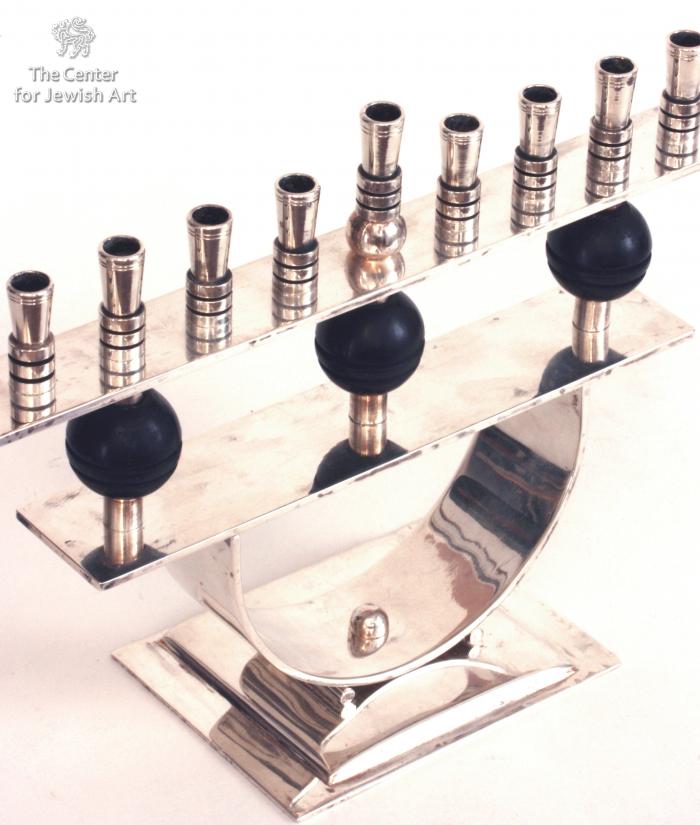Obj. ID: 37404 Hanukkah lamp, Tel Aviv, circa 1940

sub-set tree:
The following description was prepared by William Gross:
The festival of Chanukah is celebrated in the winter period around December and commemorates a Biblical story in which the Jews of the Land of Israel rebel against the Greek occupiers. They reclaim the desecrated Holy Temple in Jerusalem and, miraculously, the small amount of pure oil remaining is enough to keep the Temple light going for eight days. Lamps with eight burners are lit during this holiday, both in the synagogue and at home. Through the centuries, such lamps have taken a wide variety of forms.
There exist very few silver Judaica objects in the style of Art Deco. Of that which are known, most are of German origin. Of the few makers known, one of the major artists working after 1925 was Bernhard Friedlaender of Dusseldorf. While very few of the objects he created have survived the Holocaust, there are many pictures of objects by him in the archives of the pre-war Jewish Museum of Berlin. These images are now held at the ZIH in Warsaw. Friedlaender immigrated to Palestine at some point in the 1930's where he continued to work in silver during the remainder of that decade. This cup was fashioned by him during this period and is made in a simple yet elegant modern style. His work is very much in concert with that of two other German emigres to Palestine, Ludwig Wolpert and Gumpel. Apparently because of a lack of customers for more expensive silver objects, Friedlaender began to work in silver plated brass signed by him. He then apparently purchased the firm of "Michsaf", which produced such silver-plated brass objects according to his designs. Objects from all these periods exist in the Gross Family Collection.



